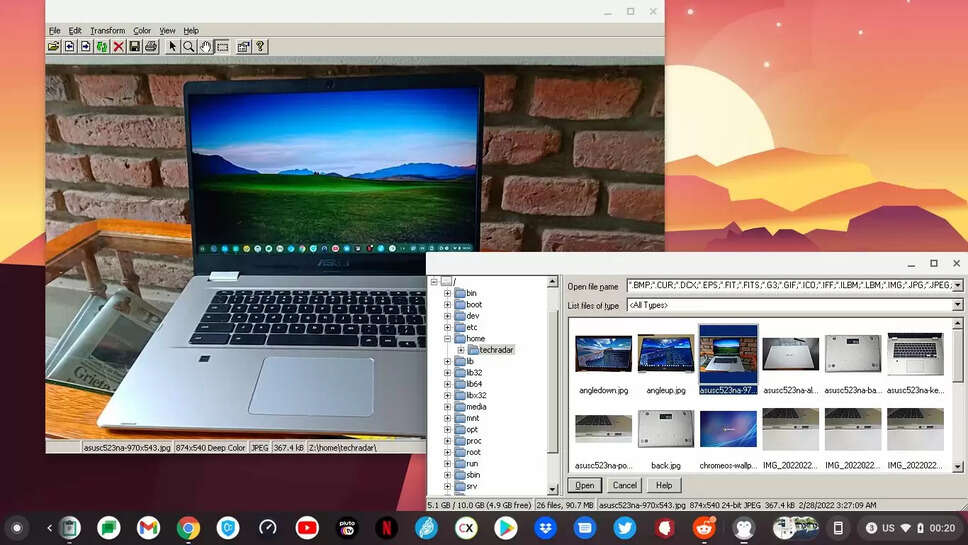The Case for One Google OS: Why ChromeOS and Android Are Destined to Unite

Google appears to be inching closer to a future where ChromeOS and Android — once distinct operating systems with different purposes — converge into a single, unified platform. While both platforms have carved their own identities over the years, the prospect of merging them isn't just logical, it’s increasingly inevitable. In a world that is moving toward seamless computing across devices, operating systems, and use-cases, Google’s long-term strategy of bringing ChromeOS and Android under one roof could mark a transformative shift in its ecosystem.
This potential merger is not about simply fusing two codebases; it’s about creating a unified experience that delivers the best of both platforms — Android’s flexibility and app richness, and ChromeOS’s lightweight efficiency and security. The convergence could redefine personal computing and give Google a stronger foothold in a world dominated by Apple’s ecosystem and Microsoft’s enterprise solutions.
Historical Divergence, Strategic Convergence
Android was built primarily for smartphones, focusing on touchscreen interactions, app diversity, and mobility. ChromeOS, on the other hand, was designed as a lightweight, cloud-first operating system for laptops and desktops. While Android became ubiquitous on mobile devices, ChromeOS quietly found its niche in the education sector, affordable notebooks, and cloud-focused workflows.
For years, the two systems evolved in parallel. But over time, their feature sets have started to blur. Android apps can now run on ChromeOS. Google has also introduced features like Phone Hub, which links Android phones with Chromebooks. ChromeOS has gained support for touch input, Android-like gestures, and even the Google Play Store.
These overlaps suggest that the eventual merger isn’t just likely — it’s already underway in spirit.
A Unified OS Brings Simplicity
One of the strongest arguments for merging ChromeOS and Android is simplicity — for users, developers, and Google itself. Maintaining two separate operating systems with overlapping capabilities is expensive, resource-intensive, and increasingly redundant.
For users, a unified operating system reduces confusion and increases familiarity across devices. Imagine buying a Chromebook that behaves exactly like your Android phone, where apps, settings, and Google services are perfectly synchronized. This seamless transition between mobile and desktop environments is what consumers have come to expect in a world where Apple’s iPhones, iPads, and Macs already work in harmony.
For developers, it means a more unified target environment. Instead of adapting their apps for two slightly different systems, they can build once and run everywhere within Google’s ecosystem. A consolidated OS would encourage better app optimization, consistency, and broader reach.
And for Google, a singular platform means streamlined updates, fewer security loopholes, and a focused product development roadmap.
The Market Demands Ecosystem Cohesion
Consumers today expect ecosystems, not silos. Apple’s success is deeply rooted in its cohesive ecosystem — a user can start a task on their iPhone and finish it on their MacBook. Microsoft has made strides in integrating Windows with Android phones through apps like Phone Link and cross-device syncing.
Google has lagged in this space. While it leads in global OS market share thanks to Android, it lacks the cross-device fluidity that Apple users enjoy. A unified ChromeOS-Android system would help bridge this gap, enabling better continuity features such as universal clipboard, file handoff, notifications sync, and app continuity across phone, tablet, and desktop.
Moreover, as form factors evolve — with foldables, tablets, detachable laptops, and even Android-powered TVs — having a flexible operating system that can scale and adapt to all of them is not just convenient, it’s essential.
More Power to the Hybrid Devices
The growing popularity of hybrid devices — like tablets that double up as laptops, or foldables that shift between screen sizes — needs an OS that’s dynamic and versatile. Android, while powerful on phones, has struggled with large-screen experiences, though recent efforts (like Android 12L and Android 14) are addressing this gap.
ChromeOS, on the other hand, is well-suited for productivity with keyboard and mouse input, multi-window multitasking, and desktop-like environments. A merged OS could take the best of both worlds: Android’s adaptability and app ecosystem, combined with ChromeOS’s productivity-centric design. This would be a game-changer for convertible devices, providing users with a consistent experience regardless of how they interact with their hardware.
Security and Performance Gains
ChromeOS is lauded for its speed, efficiency, and security — traits that stem from its lightweight architecture and sandboxed app model. Android, while secure in its modern iterations, still deals with challenges like app bloat, background processes, and inconsistencies due to OEM customizations.
A unified operating system could inherit ChromeOS’s security-first mindset while retaining Android’s openness. For instance, Google could introduce ChromeOS-like seamless updates and sandboxing to Android phones, while giving Chromebooks deeper hardware access and native support for powerful Android APIs. This fusion could reduce fragmentation and improve overall system performance across devices.
A Competitive Edge Against Rivals
In merging ChromeOS and Android, Google could unlock new competitive advantages. Apple’s ecosystem is tightly integrated, but also highly controlled. Microsoft has enterprise muscle but lacks a dominant mobile OS. Google sits at an intersection — with Android’s massive install base and ChromeOS’s emerging potential — it has the ingredients to create a cross-platform powerhouse.
With a single, unified OS, Google can offer a strong alternative to both Apple’s ecosystem walled garden and Microsoft’s enterprise-heavy platforms. It could become the go-to platform for students, professionals, and casual users alike — particularly in regions where price sensitivity makes Chromebooks and Android devices more popular than premium Apple gear.
Challenges Ahead
Of course, this isn’t without challenges. A merger of this scale requires not only technical integration but also philosophical alignment. ChromeOS was born from the cloud, emphasizing minimalism and web-first workflows. Android, by contrast, is app-heavy, offline-friendly, and highly customizable.
Finding the right balance between these philosophies is complex. Additionally, OEMs — especially those who modify Android heavily (like Samsung, Xiaomi, etc.) — may push back if the merged platform limits their ability to differentiate.
There’s also the matter of app optimization. Many Android apps aren’t well-optimized for desktops or large screens. Google would need to ensure that the developer ecosystem is motivated to create high-quality, responsive apps that work well across all form factors.
The Future is Unified
Despite the challenges, the logic behind merging ChromeOS with Android is sound. The lines between mobile, desktop, and tablet usage are blurring. Users don’t want separate experiences on different devices — they want consistency, continuity, and simplicity.
For Google, uniting its two operating systems is not just about technology — it’s about shaping the future of computing. A single, adaptive, secure, and powerful OS that scales across devices would put Google in a better position to serve its billions of users — and stay competitive in an increasingly ecosystem-driven tech world.
As ChromeOS and Android continue to evolve toward each other, the writing on the wall is clear: one Google OS, many devices, one seamless experience.
